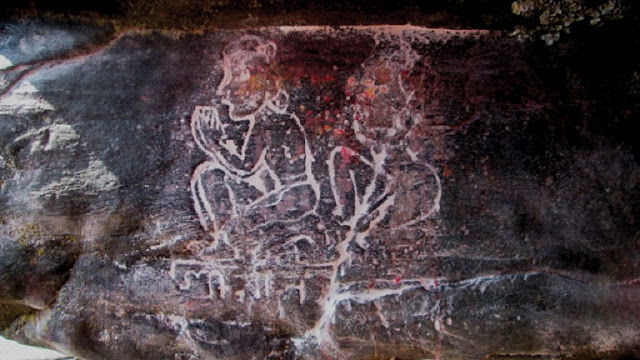Nepali art history will have to be revised after the recent discovery of rock paintings in Upper Mustang. Till now, the most interesting archaeological finds in Upper Mustang were sky caves containing human remains 1,500 years old, and scriptures and textiles suggesting the region’s links to the ancient Silk Road.
 |
| Credit: Fidel Devkota |
“The paintings and inscriptions are different in style, execution, composition and placement, suggesting that they are from various historical periods,” says Devkota, who had been documenting the impact of climate change in Mustang for the past 10 years when he came across the rock art which are in such a remote location, even local herders didn’t know of them.
 |
| Credit: Fidel Devkota |
Devkota collaborated with John Vincent Bellezza, an archaeologist and cultural historian specialising on Tibet, and the two have jointly published a paper, ‘Obscured for Centuries: The Lost Rock Art of Lo Mustang’, documenting the discovery.
 |
| Credit: Fidel Devkota |
“The first phase of paintings is prehistoric but the later phases are clearly motivated by Buddhism and Yungdrung Bon religious practices,” writes Devkota in the paper. The rock art depicts hunting and other wild animal-human interaction, birth giving, anthropomorphic portraits, tiered shrines and other sacred symbols. Belleza writes that the rock art in Kya and Ludak focuses on the beliefs, values and activities of the painters, although pinpointing their specific traditions is difficult. It is also difficult to discern whether the artists were pastoralists or agriculturists or both.
 |
| Credit: Fidel Devkota |
Says Devkota: “Even if we cannot preserve it on site, we should at least have proper documentation for the future because if we lose it now, we may never fully understand what these works represent.”
Quarry Art
Professor Purushottam Lochan Shrestha was on a field visit to Changu Hill overlooking Kathmandu with his students four years ago when a shopkeeper mentioned paintings in the nearby Kalika Gufa. Curious, Shrestha found the cave and came upon hitherto unknown art works from the Malla era.
 |
| Credit: Purushottam Lochan Shrestha |
To the south of Bhaktapur in Tathali, Shrestha later discovered rock edicts from the Malla period carved into three huge rockfaces. The 15 inscriptions dating back 700 years mention that the rocks from here were used to build the Vatsala Temple in Bhaktapur, which came down in the 2015 earthquake. There are also paintings of elephants and horses.
 |
| Credit: Purushottam Lochan Shrestha |
“Rock paintings and inscriptions provide a rare window to our history: we need more research,” says Shrestha, who has documented the findings in a recent book, Guha, Guhalekh, Guhachitra ewam anya Sampada. “There are rock quarries with ancient paintings that are in danger of being lost forever.”
Author: Sahina Shrestha | Source: Nepali Times [December 16, 2017]
